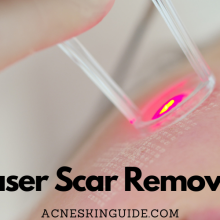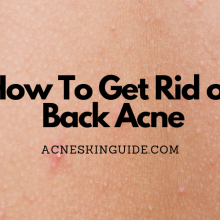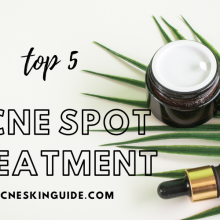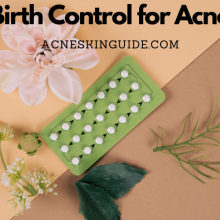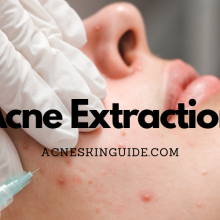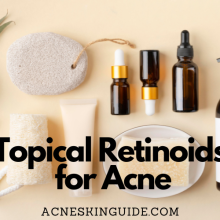Laser Treatments for Acne – A Guide to Acne Laser Therapy | AcneSkinGuide
Summary of Laser Treatments for Acne
Laser treatments have emerged as a highly effective solution for acne, offering long-lasting results by addressing both active acne and scarring. These treatments can be broadly classified into ablative lasers, which remove outer layers of damaged skin, and non-ablative lasers, which penetrate the skin without causing significant damage.
Benefits include reducing inflammation and bacteria, improving skin texture and tone, enhancing topical medication absorption, and providing a laser toning effect. While generally safe, potential side effects like redness, swelling, pigmentation changes, and viral reactivation must be considered. Proper preparation, aftercare, and choosing an experienced provider are crucial. Laser treatments may be recommended for severe, persistent acne or scarring and can be combined with other therapies for optimal results, despite potential downsides like cost and downtime.

Laser Treatments for Acne: A Comprehensive Guide
Acne is a common skin condition that affects millions of people worldwide, and it can have a significant impact on an individual’s self-esteem and quality of life. While there are various treatments available for acne, laser therapy has emerged as a highly effective solution, offering long-lasting results and addressing both active acne and scarring.
Understanding Acne and its Causes
Acne is a complex condition caused by a combination of factors, including excess oil production, clogged pores, bacterial growth, and inflammation. These factors can lead to the formation of blackheads, whiteheads, pimples, and in severe cases, cystic acne. Understanding the root causes of acne is essential in determining the most appropriate treatment approach.
Types of Laser Treatments for Acne
Laser treatments for acne can be broadly classified into two categories: ablative lasers and non-ablative lasers.
Ablative Lasers:
Ablative lasers, such as carbon dioxide (CO2) and erbium lasers, work by removing the outer layers of damaged skin. This process helps to eliminate acne lesions and stimulate the production of new, healthy skin. Ablative lasers are highly effective in treating acne scars, including ice pick, boxcar, and rolling scars, by removing the outdated tissue and promoting collagen production.
Non-Ablative Lasers:
Non-ablative lasers, like pulsed dye lasers and Smoothbeam lasers, penetrate the skin without causing significant damage to the surface. These lasers target and destroy acne-causing bacteria, reduce inflammation, and stimulate collagen production. They are commonly used for treating active acne and improving overall skin texture and tone.
Other Laser Treatments
In addition to ablative and non-ablative lasers, other laser treatments are also used in the management of acne, including blue light therapy and photodynamic therapy. These treatments use specific wavelengths of light to target and eliminate acne-causing bacteria and reduce inflammation.
Benefits of Laser Acne Treatments
Laser treatments for acne offer several benefits, including:
- Reduced Inflammation and Bacteria: Lasers can effectively target and eliminate acne-causing bacteria, reducing inflammation and preventing future breakouts.
- Improved Skin Texture and Tone: By stimulating collagen production, laser treatments can improve the overall texture and tone of the skin, resulting in a smoother and more even complexion.
- Long-Lasting Results: Unlike topical treatments that provide temporary relief, laser treatments offer long-lasting results by addressing the root causes of acne.
- Enhanced Absorption of Topical Medications: Laser treatments can improve the absorption of topical acne medications, increasing their effectiveness.
- Laser Toning: Certain laser treatments, such as the Smoothbeam laser, can provide a laser toning effect, improving the overall appearance of the skin.
Potential Side Effects and Risks
While laser treatments are generally safe and effective, there are potential side effects and risks to be aware of, including:
- Short-Term Side Effects: Redness, swelling, and peeling are common short-term side effects that typically resolve within a few days to weeks after treatment.
- Pigmentation Changes: In some cases, laser treatments can lead to hyperpigmentation or hypopigmentation, particularly in individuals with darker skin tones.
- Herpes Simplex Virus Reactivation: Laser treatments can sometimes trigger the reactivation of the herpes simplex virus, leading to cold sores or fever blisters.
To minimize these risks, it is essential to choose an experienced and qualified provider who can tailor the treatment to your specific skin type and concerns.
Preparing for Laser Treatment
Proper preparation is crucial for achieving optimal results and minimizing potential side effects. This typically involves:
- Consultation with a Dermatologist: A thorough consultation with a board-certified dermatologist is essential to assess your skin condition, discuss your expectations, and determine the most appropriate laser treatment.
- Pre-Treatment Skincare: Your provider may recommend using specific skincare products or stopping certain medications or supplements in the weeks leading up to your treatment.
- Preconditioning the Skin: In some cases, your provider may prescribe preconditioning treatments, such as topical retinoids or chemical peels, to prepare your skin for laser treatment.
Recovery and Aftercare
After undergoing laser treatment, it is important to follow a proper aftercare routine to ensure optimal healing and minimize potential complications. This may include:
- Downtime and Healing Process: Depending on the type of laser treatment, there may be a healing period of several days to weeks, during which you may experience redness, peeling, and discomfort.
- Skincare Routine: Your provider will recommend a specific skincare routine, which may include using gentle cleansers, moisturizers, and sun protection.
- Avoiding Sun Exposure: It is crucial to avoid direct sun exposure and wear broad-spectrum sunscreen during the healing process to prevent pigmentation issues.
- Managing Pain and Discomfort: Over-the-counter or prescription medications may be recommended to manage pain and discomfort during the healing process.
Costs and Number of Treatments Needed
The cost of laser treatments for acne can vary significantly based on factors such as geographic location, provider expertise, and the type of laser used. Most individuals require multiple treatment sessions, typically ranging from 3 to 6 sessions spaced several weeks or months apart, to achieve optimal results.
At-Home Laser and Light Therapy Devices
While at-home laser and light therapy devices are available at a lower cost, it is important to note that their efficacy and depth of penetration are limited compared to professional treatments. Setting realistic expectations and following proper safety guidelines is crucial when using these devices.
When to Consider Laser Acne Treatment
Laser treatments may be recommended for individuals with severe, cystic, or persistent acne that has not responded to other treatments, as well as those seeking to improve the appearance of acne scarring. It is important to consult with a dermatologist to determine if laser treatment is the most appropriate option for your specific condition.
Finding a Qualified Provider
When considering laser treatment for acne, it is essential to choose a qualified provider with extensive experience in using specific laser devices and technologies. Look for board-certified dermatologists who can demonstrate their expertise and provide before-and-after images of their work.
Combining Laser with Other Treatments
In many cases, laser treatments can be combined synergistically with other therapies, such as oral or topical medications, chemical peels, and periodic maintenance treatments, to enhance results and prolong the benefits.
Downsides of Laser Acne Treatments
While laser treatments offer numerous benefits, it is important to consider the potential downsides:
- Cost: Laser treatments can be expensive, and multiple sessions may be required to achieve desired results, which can add up over time.
- Downtime and Healing Process: Depending on the type of laser treatment, there may be a significant healing period with redness, peeling, and discomfort.
- Risk of Side Effects: As with any medical procedure, there is a risk of side effects, such as pigmentation changes and viral reactivation, which can be minimized by choosing an experienced provider.
- Limited Effectiveness for Certain Types of Acne: Laser treatments may not be as effective for certain types of acne, such as hormonal or cystic acne, and may require combination therapy with other treatments.
Conclusion
In summary, laser treatments for acne offer a highly effective solution for addressing both active acne and scarring, providing long-lasting results by targeting the root causes of the condition. By understanding the different types of laser treatments, potential side effects, and recovery process, individuals can make an informed decision and work closely with a qualified provider to achieve optimal results.
FAQs and Answers
How long do the results of laser acne treatments typically last?
The longevity of results from laser acne treatments can vary, but typically the improvements are long-lasting. Here are some general timeframes:
For active acne/acne prevention:
- Results from lasers that target acne-causing bacteria and inflammation (like pulsed dye lasers) can last 3-6 months before touch-up treatments may be needed.
- When combined with proper skincare and medications, results can potentially last years by preventing new acne from forming.
For acne scarring:
- Results from resurfacing lasers that remodel scar tissue (like CO2 and Erbium lasers) tend to be more permanent for the treated scars.
- However, new acne scarring can still develop over time if active acne is not controlled.
- Some providers recommend maintenance treatments every 1-2 years to maximize scar revision.
Multiple treatment sessions, usually 3-6 spaced weeks to months apart, are generally needed to achieve optimal, lasting results. Consistent skincare, sun protection, and potentially follow-up treatments help extend the benefits long-term. But individual results can still vary based on acne severity, skin type, and adherence to aftercare.
Can laser treatments for acne be performed on all skin types and tones?
Laser treatments for acne can generally be performed on all skin types and tones, but certain precautions and adjustments may need to be made for individuals with darker skin tones.
For lighter skin tones (Fitzpatrick skin types I-III):
- Most laser treatments are considered safe with proper settings and technique.
- There is a lower risk of complications like pigmentation changes or burns.
For darker skin tones (Fitzpatrick skin types IV-VI):
- There is a higher risk of side effects like hyperpigmentation, hypopigmentation, or burns when using higher-energy laser settings.
- Non-ablative lasers like pulsed dye lasers may be preferred over ablative lasers that remove skin layers.
- Lower fluence (energy) settings and longer wavelengths are typically used to reduce risk.
- Pre-treating with skin brightening agents can help prepare the skin.
Some key considerations for safe laser treatments in darker skin tones include:
- Using laser devices with cooling components to protect the epidermis
- Allowing adequate spacing between treatment sessions
- Customizing based on ethnicity, degree of tan/pigmentation
- Having an experienced provider familiar with laser-skin interactions
So while possible on all skin tones when done carefully, darker skin requires more customization and precautions from laser acne treatments to avoid complications. Proper device selection and conservative settings are essential.
What is the optimal timing for laser treatments in relation to one’s menstrual cycle for women?
For women undergoing laser treatments for acne, there are some considerations around optimal timing in relation to the menstrual cycle:
Most providers recommend avoiding laser treatments during the week right before and during a woman’s menstrual period. Here’s why:
- Hormone fluctuations
In the luteal phase (about 1 week before menses), hormone levels like progesterone rise, which can increase inflammation and make acne worse. Lasers may be less effective during this time of heightened breakouts. - Increased sensitivity
Many women experience increased skin sensitivity in the days right before and during their period. Laser treatments may cause more discomfort, redness, and potential side effects during this time.
The ideal window is typically:
- 1 week after a woman’s period ends
- Up until about 1 week before her next period is due
This timing helps avoid the hormone fluctuations pre-menses while still allowing enough healing time post-treatment before the next cycle begins.
However, every woman is different in terms of her cycle and skin sensitivity. Some providers recommend tracking your individual pattern to determine the optimal timing window for laser treatments between cycles.
If you do require treatment despite timing challenges, adjusting laser settings, applying hydrating masks post-treatment, and taking oral anti-inflammatory medication can help manage increased inflammation and discomfort.
Can areas other than the face be treated with laser for acne?
Yes, laser treatments can be used to treat acne not just on the face, but also on other areas of the body. Some common areas that may be treated with laser for acne include:
Back Acne (Bacne)
Back acne is very common, especially in teenage years. Laser treatments like pulsed dye lasers, Nd:YAG lasers, and potassium titanyl phosphate (KTP) lasers can effectively treat bacne by reducing inflammation, destroying acne-causing bacteria, and improving the appearance of scars.
Chest/Shoulder Acne
Similar to bacne, chest and shoulder acne can also be treated with laser therapies. The same types of lasers used for back acne are utilized.
Neck Acne
Laser acne treatments can be performed on the neck area as well to clear up persistent pimples and improve skin texture.
While the face is the most common target, laser acne treatments are absolutely safe and effective for trunk acne as well when administered by an experienced provider. Treating larger surface areas may require more treatment sessions and potentially higher energies or overlapping passes.
Some benefits of laser for body acne include:
- Precision treatment avoids exposed skin bleaching common with topicals
- Lasers can penetrate through thicker skin on the back/chest
- Improves difficult-to-treat acne scars and discoloration
Proper laser selection based on acne severity, skin type, and coverage needed is important when treating body acne. But overall, laser therapy provides an excellent option beyond just facial acne.
How does laser treatment compare to other options like isotretinoin (Accutane) in terms of effectiveness and safety?
When comparing laser treatment to isotretinoin (Accutane) for acne, there are some key differences in effectiveness and safety to consider:
Effectiveness:
Isotretinoin is generally considered the most effective treatment option for severe, nodular acne. It works systemically to reduce oil production and has very high clearance rates.
Laser treatments tend to be less effective than isotretinoin for very severe cystic/nodular acne. However, lasers can be highly effective for moderate inflammatory acne and for improving acne scars.
Most dermatologists recommend combining laser with other topical/oral treatments for optimal results on active acne lesions.
Safety:
Isotretinoin carries significant potential side effects like birth defects, increased cholesterol, inflammatory bowel disease, mental health issues, etc. Frequent lab monitoring is required.
Laser treatments are generally considered very safe when performed by an experienced provider using appropriate settings and cooling. Side effects like redness/swelling are typically short-term.
However, lasers do carry small risks like pigmentation changes, reactivation of cold sores, and potential scarring – especially in darker skin tones if not done carefully.
Overall:
For very severe acne, isotretinoin is usually the more effective first-line therapy despite safety monitoring required.
For moderate acne or acne scars, laser can be an excellent option with a favorable risk/benefit profile, especially when combined with other treatments.
Many dermatologists use isotretinoin first for significant clearance, then laser to address any remaining lesions or scarring afterwards.
The choice depends on weighing acne severity, medical considerations, potential side effects, and patient preference under a doctor’s guidance.

